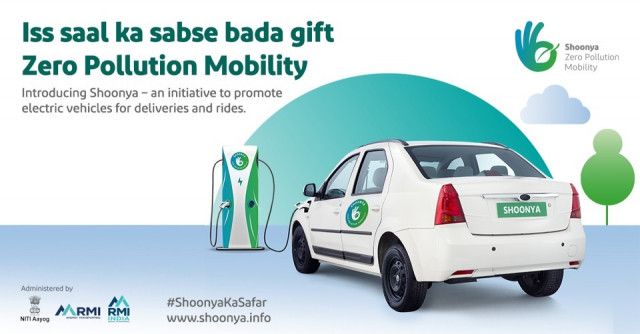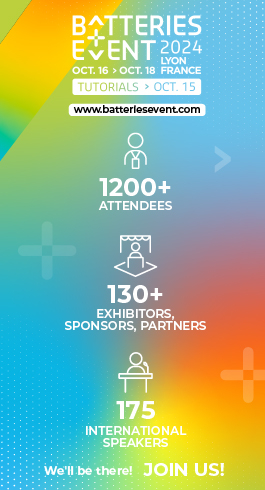Mission ‘Shoonya’: Revolutionizing the transport industry with EVs
In an exclusive interaction with Randheer Singh, Director - Electric Mobility and senior team member for Advanced Chemistry Cells Program at Niti Aayog, ETN brings out his take on the current state of affairs in the Indian e-mobility industry. He also spoke about the recently launched 'Shoonya' campaign to promote zero-emission delivery vehicles, FAME II policy revision, and financing of EVs.
The 'Shoonya — Zero-Pollution Mobility' campaign began this year with an inspiring brand film. It draws an analogy of the concept of number 'zero' - and its critical significance in the place value (decimal) system in mathematics and science in general - to 'zero-emission' in transportation to stress its conceptual importance in achieving sustainable mobility and a cleaner environment.
The campaign was launched by NITI Aayog and RMI in partnership with leading industry players in September last year. It aims to raise awareness about EVs among consumers, and recognize industry efforts through an integrated combination of corporate branding, impact assessment, and consumer awareness.
"The vision of the campaign is to promote the use of EVs for last-mile delivery and ride-hailing services, by recognizing industry efforts and raising consumer awareness about EVs", said Randheer Singh, Director - Electric Mobility, Niti Aayog.
"We have over 75 corporate partners including leading e-commerce companies, ride-hailing companies, vehicle manufacturers, fleet aggregators, and charging infrastructure providers to promote the electrification of the commercial passenger and freight transportation in urban, last-mile applications", he claimed.
The campaign incorporates a corporate branding program, through which deliveries, rides, and associated vehicles and infrastructure are branded with the Shoonya logo. "The Shoonya website will also host a resource toolkit that will guide potential EV customers," explained Mr. Singh, "with all essential information required to procure EVs, including cost comparison calculator, policy-map, and listing of financing options."
"We hope that Shoonya becomes a common slogan in every household, thereby consumers create a demand-pull scenario for EVs. We are confident that this campaign will encourage more industry partners to join the initiative and help our country eliminate air pollution from the commercial transport sector."
The campaign claims that pushing all last-mile rides and deliveries towards zero-emission can help our country save about 17-kilo tons of PM, 55 million tons of CO2, and 5.7 lakh crore worth of fuel every year.
Charging infra and FAME II
Mr. Singh believes that allying with corporate players under the Shoonya mission can further the strengthening of the EV ecosystem in a big way, including charging infrastructure. "They are the ones taking the innovative technology and investment leads at this point, may it be charging points in city centers, battery swapping, or BaaS models. Together, with government efforts including safety standardization measures from DST and BIS, the prospects of achieving immense lead in e-mobility are apparent".
He further informed that about ₹1,000 crore has been earmarked for charging infra development under the FAME II scheme. Pointing out the Ministry of Power's revised guidelines for charging stations in urban spaces, in an area of a 3×3 km grid in 9 big cities, he predicted that the combination of a private home or office charging and battery swapping stations in public spaces will dominate the EV charging market in the coming years.
When asked about the immediate effects of the FAME II scheme extension till 2024 in the domestic EV industry, Mr. Singh said that there has been a significant uptick in e-2W sales since the announcement.
"Both the industry and end customers are welcoming the increase in subsidy to ₹15,000 per kWh, and capping to 40 percent of the vehicle's sales price."
On the e-3W and e-buses front, the aggregation model suggested under the remodeled FAME II has resulted in a significant drop in the price of vehicles by about 20 percent due to aggregation and homogenized product fleet, he added.
EV Financing
"Financing is a big challenge in the commercial EV segments, as the interest rates hover around 20-40 percent, thereby making EV buying and owning unaffordable", he acknowledged. Despite innovative vehicle financing and battery swapping that are promising to bring down upfront costs, he opined that larger issues such as unavailability of easy credit with limited credit history or collaterals, low LTV, and absence of secondary market need to be addressed.
"A viable solution to this challenge would be OEM – banks or NBFCs partnerships, and captive finance options with long-term warranties or buy-back programs, which can improve confidence among EV buyers", he suggested.
Moreover, Mr. Singh added that initially loss risk-sharing mechanisms and modalities are being worked out by the government of India along with the World Bank. "We have also done a detailed analysis on various barriers to financing, and released a handbook with 10 identified enablers to accelerating EV financing in the country."
Auto PLI
On the possible impacts of the auto PLI scheme in furthering e-mobility, Mr. Singh is positive that the scheme will boost next-generation manufacturing and the availability of futuristic mobility solutions in our country. "For sure, this will help in the creation of champion OEMs for automotive and related parts, while also giving a big boost for the drones industry as well."
"With ICE technologies being highly developed and viability is proven, we have to nudge the auto manufacturers fiscally to switch to newer and upcoming technologies. That is where auto PLI comes into the picture," he remarked. With continued policy measures, we should be in a position to see a massive transformation and adoption towards advanced auto components and EVs. The idea is to make India a hub of manufacturing in emerging mobility trends.





















